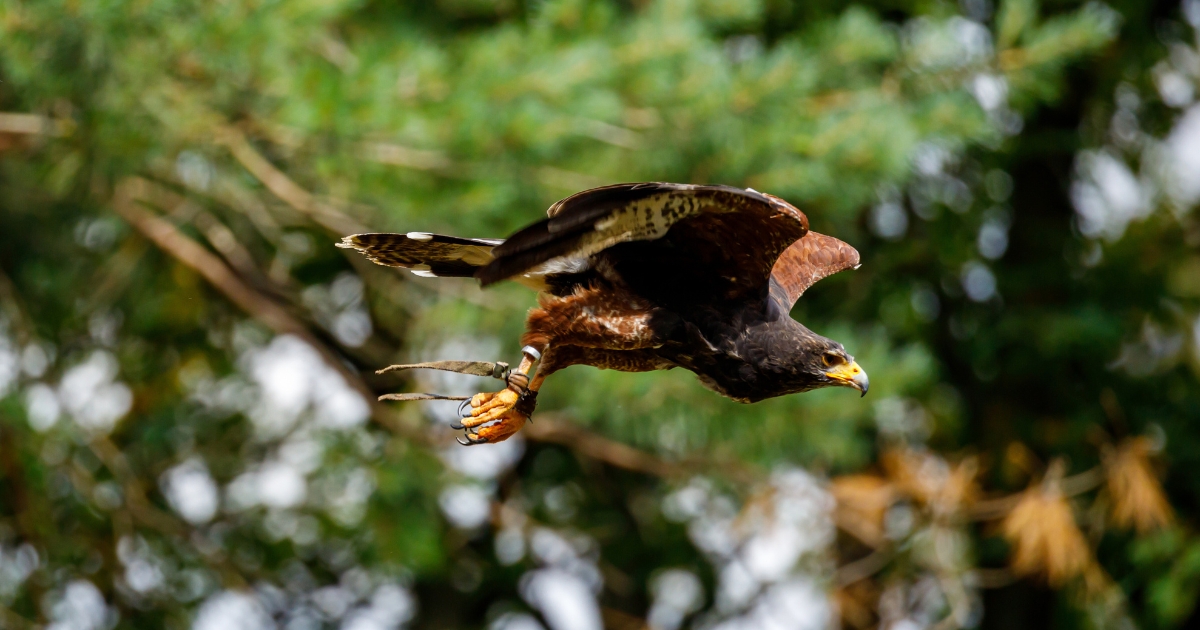As the sun dips below the horizon, and the world is bathed in the soft glow of twilight, a question arises: Do hawks, those majestic aerial predators, continue their hunt into the night? This inquiry has captivated the minds of bird enthusiasts and nature lovers alike, as we seek to unravel the mysteries surrounding the hunting habits of these remarkable creatures.
In this comprehensive guide, we’ll delve deep into the enigmatic world of hawks and their nocturnal hunting behavior. We’ll explore the factors that influence their hunting strategies, examine the exceptions to the rule, and gain insights into the best practices for observing and studying these magnificent birds of prey.
Hawks: Masters of Aerial Predation
Diurnal vs. Nocturnal Birds
To understand the hunting behavior of hawks, we must first distinguish between diurnal and nocturnal bird species. Diurnal birds, like hawks, are active during the day and rely on their exceptional eyesight and hunting skills to locate and capture prey in the bright sunlight. On the other hand, nocturnal birds, such as owls, are equipped with specialized adaptations that allow them to hunt effectively at night.
Hawks have evolved to be masters of aerial predation during daylight hours, with keen vision, sharp talons, and powerful wings that enable them to soar, swoop, and strike with precision.
Hawks’ Hunting Strategies
Hawks employ a variety of hunting strategies, each tailored to their specific prey and environment. One common technique is soaring and gliding, where they use thermal currents and wind patterns to conserve energy while scanning the ground below for potential prey.
Another hunting method is stooping or diving, where the hawk spots its target from a great height and plunges towards it at incredible speeds, using its talons to snatch the prey mid-air or from the ground.
Perch hunting is also a favored tactic, where the hawk patiently waits on a vantage point, such as a tree branch or utility pole, before swooping down on unsuspecting prey that wanders too close.
Factors Influencing Nocturnal Hunting
Vision and Eyesight
One of the primary factors that influence a hawk’s ability to hunt at night is its vision and eyesight. Hawks are diurnal birds, with exceptional eyesight adapted for hunting during the day. Their eyes are designed to detect movement and colors with remarkable clarity, allowing them to spot prey from great distances.
However, when darkness falls, their vision becomes significantly impaired, as their eyes are not well-suited for low-light conditions. Unlike owls, which have specialized adaptations for night vision, hawks rely heavily on their acute daytime eyesight for successful hunting.
Prey Availability and Behavior
Another crucial factor that affects a hawk’s hunting behavior is the availability and behavior of their prey. Many of the small mammals, birds, and insects that hawks typically hunt are diurnal, meaning they are active during the day and seek shelter or become less active at night.
As a result, the chances of a hawk successfully locating and capturing prey at night are significantly reduced, as their main food sources are less accessible and potentially harder to detect in the dark.
Environmental Conditions
Environmental conditions, such as light levels and weather patterns, also play a role in determining whether hawks hunt at night. During a full moon or on bright, moonlit nights, hawks may have a slightly better chance of hunting successfully due to the increased visibility.
However, overcast or cloudy conditions can significantly reduce the available light, making it even more challenging for these diurnal hunters to effectively locate and pursue prey after sunset.
Exceptions to the Rule
Owls: The True Nighttime Hunters
While hawks are primarily diurnal hunters, there is another group of raptors that have mastered the art of nocturnal hunting: owls. These silent, stealthy predators are equipped with a variety of specialized adaptations that allow them to hunt efficiently at night.
Owls have incredible night vision, thanks to their large, forward-facing eyes and high density of light-sensitive rod cells. Their exceptional hearing also aids in pinpointing the slightest movements of their prey in the dark.
In contrast to hawks, which rely heavily on their eyesight for hunting, owls employ a combination of vision, hearing, and specialized hunting techniques to locate and capture their prey at night.
Opportunistic Hunting in Hawks
Although hawks are primarily diurnal hunters, there have been instances where they have been observed hunting at night, particularly under specific circumstances or when presented with an opportunistic situation.
For example, during periods of prolonged daylight, such as the summer months in northern latitudes, hawks may extend their hunting activities into the early evening hours, taking advantage of the extended twilight and residual light.
Additionally, in urban or well-lit environments, hawks have been known to hunt at night, drawn by the artificial lighting and the presence of potential prey attracted to these illuminated areas.
Observing and Studying Hawk Behavior
Ethical Bird Watching Practices
Observing and studying the behavior of hawks in their natural habitats is a fascinating pursuit for bird enthusiasts and researchers alike. However, it is crucial to follow ethical bird watching practices to ensure the safety and well-being of these remarkable creatures.
When observing hawks, maintain a respectful distance and avoid disturbing them or their nesting sites. Use binoculars or spotting scopes to observe their behavior from a safe distance, and refrain from making loud noises or sudden movements that could startle or stress the birds.
Citizen Science and Data Collection
For those interested in contributing to scientific research and conservation efforts, there are numerous opportunities to participate in citizen science projects focused on hawk behavior and population monitoring.
Online platforms and mobile apps allow bird enthusiasts to record and submit sightings, nesting observations, and other relevant data, which can be invaluable for researchers studying hawk populations, migration patterns, and habitat preferences.
By participating in these initiatives, you can play an active role in expanding our understanding of these magnificent birds and supporting their conservation.
Conservation and Protection
Threats to Hawk Populations
Despite their impressive hunting abilities and adaptations, hawk populations face various threats, including habitat loss and fragmentation, pesticide exposure, and human disturbances.
Urbanization and deforestation have resulted in the destruction of many hawk habitats, limiting their nesting and hunting grounds. Additionally, the use of certain pesticides and chemicals can accumulate in the food chain, posing health risks to hawks and other raptors.
Human activities, such as illegal hunting, disturbance of nesting sites, and collisions with man-made structures, also contribute to the decline of hawk populations in some areas.
Conservation Efforts
To protect and preserve hawk populations, various conservation efforts are underway at local, national, and international levels. Legislation and protected areas, such as national parks and wildlife refuges, provide safe havens for hawks and other wildlife.
Community involvement and education campaigns play a crucial role in raising awareness about the importance of hawk conservation and promoting responsible outdoor activities that minimize disturbance to these magnificent birds.
By supporting conservation organizations, participating in citizen science initiatives, and advocating for sustainable land management practices, we can contribute to the preservation of hawk populations and ensure their continued presence in our natural landscapes.
People Also Read:
Conclusion
In conclusion, while hawks are primarily diurnal hunters, their nocturnal hunting behavior is a captivating and complex topic that has sparked curiosity among bird enthusiasts and researchers. Through this exploration, we’ve learned that while hawks are not specialized for nighttime hunting like their owl counterparts, there are instances where they may opportunistically hunt at night or during periods of extended twilight.
Factors such as vision, prey availability, and environmental conditions all play a role in determining a hawk’s hunting behavior and success rates after dark. By understanding these nuances, we gain a deeper appreciation for the remarkable adaptations and survival strategies employed by these aerial predators.
As we continue to observe and study hawk behavior through ethical practices and citizen science initiatives, we not only satiate our curiosity but also contribute to the conservation efforts aimed at protecting these magnificent creatures and their habitats.
So, the next time you venture into the great outdoors, keep an eye to the skies, both day and night, for you may just witness the majestic silhouette of a hawk soaring gracefully, reminding us of the wonders that nature holds and the importance of preserving these awe-inspiring animals for generations to come.
FAQs
Can hawks see well at night?
No, hawks are not well-equipped for night vision. Their eyes are designed for exceptional daytime vision, allowing them to spot prey from great distances and track movement with remarkable clarity. However, their vision becomes significantly impaired in low-light conditions, making it challenging for them to hunt effectively at night.
Do all hawk species have the same hunting habits?
While most hawk species are diurnal hunters, there can be variations in their specific hunting habits and strategies. Some species may be more inclined to hunt during certain times of the day, while others may be more opportunistic and adapt their hunting behavior based on prey availability and environmental conditions.
What happens if a hawk accidentally catches prey at night?
In rare instances where a hawk accidentally catches prey at night, it may attempt to consume or cache the prey for later. However, their ability to effectively locate and capture prey at night is limited due to their diurnal nature and reliance on excellent daytime vision.
Are there any hawk species that are more active at night?
While most hawk species are predominantly diurnal, there are a few species that may exhibit greater activity during twilight hours or in well-lit urban areas at night. Examples include the Red-tailed Hawk and the Cooper’s Hawk, which have been observed hunting in urban environments with artificial lighting.
How can I help protect hawk populations?
There are several ways you can contribute to the conservation of hawk populations:
- Support organizations and initiatives dedicated to protecting hawks and their habitats.
- Advocate for sustainable land management practices that preserve natural habitats.
- Participate in citizen science projects and report hawk sightings and nesting observations.
- Minimize disturbances to nesting sites and avoid approaching or harassing hawks in the wild.
- Educate others about the importance of hawk conservation and responsible outdoor activities.

